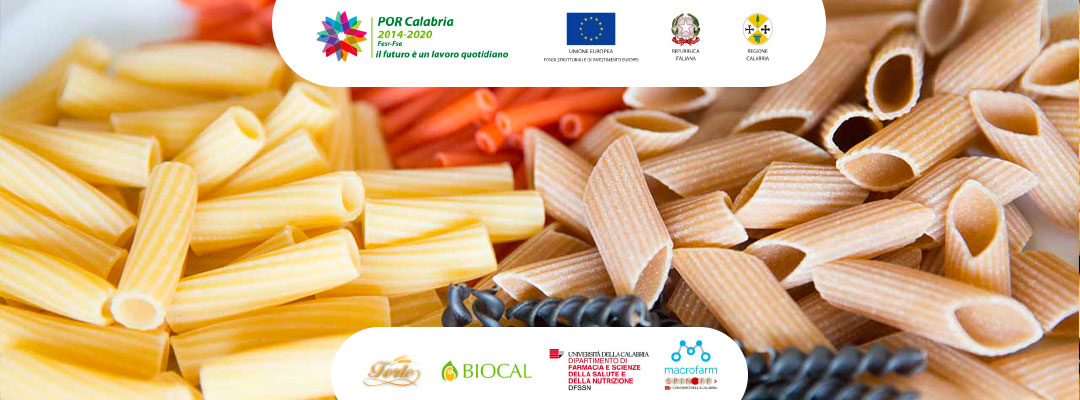General objective
The project aims at the development of vegetable flour obtained in particular from olive leaves, apple peel and inflorescences of the Carciofo, in order to use them as a basis for the production of dried pasta, which, precisely thanks to the presence of these vegetable sfarinates, can be called “functional food”, as it is characterized by additional effects that are normally not present in the seed flour alone. The idea is to analyze the flour, check the beneficial and healthy properties and to obtain, from the same, different types of pasta, food that enters widely and frequently in our diet and that meets the favor of the consumer for ease and simplicity of use in relation to the operations of manipulation, transportation and storage.
Specific objectives
- To develop new flours with a high nutritional profile, rich in nutrients (lacking in semola flour) and that are characterized by a high concentration of bioactive substances useful for different physiopathological states.
- Vegetable flour, obtained from waste from the agri-food chain such as olive leaves, apple peels and inflorescences and leaves of Carciofo, is added to the hard wheat semola flour and used to form a paste in the production of the pasta.
- Add value to waste materials
- New products to be offered to the market
Strategic Factors
The project, having as its purpose the identification of various possible uses of vegetable flour obtained in particular, from olive leaf, apple peel and carcass inflorescence, from waste and by-products not used in the agro-food chain, proposes the economic valorisation of the latter and the application of the concept of circular economy in the sector in order to use them as a basis for the production of dried pasta. This need arises from the need to minimize the waste that occurs during the processing and cultivation phases in which, in fact, various productions remain unused or because, from the economic point of view, it is not appropriate to collect them, or because they do not meet the required aesthetic standards (criteri riguardanti forma, dimensione, colore del prodotto). In recent years, consumer demands in terms of food demand have changed significantly in that we no longer feel the need to eat to suppress appetite or to introduce the necessary nutrients, but we are witnessing, in particular, a growing need to consume foods that are capable of preventing diseases and improving physical and mental well-being. Generating a virtuous cooperation agriculture enterprise and research that imposes new production and commercial strategies. The choice to use waste and by-products lies, not only, in their composition in nutrients and bioactive substances, reusable both in the food sector and in emerging sectors such as the cosmetic and nutraceutical, but also, in the need to enhance the production of the Calabria territory.
Results
The final output is to develop new flours with a high nutritional profile, rich in
nutrients (lacking in harvest flour) and that are characterized by a high concentration of bioactive substances for the treatment of various diseases. The new flour, obtained from waste from the agro-food chain, as well as the olive leaves, apple peel and inflorescences and leaves of Carciofo, will be added to the disemola flour of hard wheat and used to form a pasture in the production of three types of functional pasta.Each flour will be added (in percentages defined following the bibliographic study) to the hard digrano semola flour and will undergo the various processing stages provided for by DPR 187/2001:
- paste, where the semola and flour are stained with very pure water;
- gramming, the stage in which the well-processed dough becomes homogeneous and elastic;
- trafillation, the paste is wrapped in molds that give the paste the desired format;
- pastorization (only for regional formats), pre-incubation where a surface drying of the paste takes place;
- drying in static dryers for about 20 hours, in order to a maximum humidity of 12.5% and, finally
- packaging in well-defined packaging and that will have a different coloring depending on the type of flour used for the production of the pasta.
Contribution Granted to Project Partners: €264.675,28

